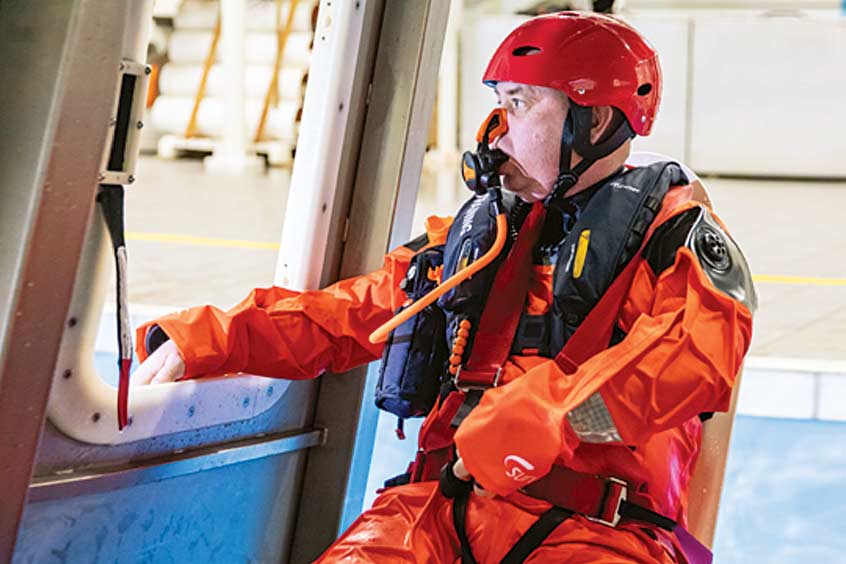Why visit ACE ’25?

A new compressed air emergency breathing system (EBS) for offshore helicopter passengers and crew introduced by Survitec has been designed to offer personnel a greater chance of survival in a water impact scenario.
Survitec's new bespoke Category A EBS has already been integrated into the company's Halo aviation lifejacket and can be deployed in a single action, using one hand. It features a mouthpiece with an integrated nose clip, a braided low-pressure hose and a reinforced carbon composite compressed air cylinder. The EBS weighs 949g, 30 per cent lighter than competing systems.
“The most striking aspect of the new cylinder design is its high air capacity,” says technical sales manager Mark Lutman. “In a water impact scenario, the short window for escape can be a limiting factor when escaping from a submerged helicopter. We designed the bespoke EBS to deliver 80 per cent more air than that required by CAP 1034, increasing the chances of survival for those escaping a ditched, capsized or submerged helicopter.”
The Civil Aviation Authority CAP 1034 guidelines (Development of a Technical Standard for Emergency Breathing Systems) to which Lutman refers were developed in 2013 after a spate of fatal helicopter accidents. It states that EBS should provide sufficient air supply for 60 seconds of breathing time at a depth down to two metres.
Over the last 20 years, EBS technology has evolved significantly. Originally, the products were classed as rebreathers, which were then superseded by hybrid rebreathers, and finally compressed air systems were introduced. Nigel Parkes, head of lifejacket design explains: “One of the first EBS was the rebreather system, ostensibly a counter-lung allowing the wearer to breathe back in their own expelled breath. These need to be orally inflated prior to submersion and are not effective when personnel have to escape from depths of more than a few metres.”
The rebreather style system evolved to a hybrid rebreather. This incorporated a cylinder of compressed air containing the equivalent of a lungful of air that is automatically released into the counter-lung on submersion.
“The addition of an air cylinder does provide the user with air to breathe if there is little time to take a deep breath, but again, this type of system is less likely to be effective at depths of more than a few metres,” Parkes continues. “The increased air capacity can also increase overall buoyancy of the lifejacket, impacting the means of escape. With these new systems, they are more suited for underwater deployment and can be used at depth because pressurised air is supplied on demand. Imagine you're evacuating a submerged helicopter. It's dark. Water is flooding in. You don't know whether up is down or down is up, and panic is setting in. The last thing you want to worry about is remembering to take a deep breath.
“Further to this, sudden exposure to cold water can induce the cold water shock response, which can significantly affect the individual's ability to hold their breath.
“The introduction of a 310 bar cylinder allows us to substantially increase the amount of breathable air available for use by the user in a water impact scenario. By combining composite materials within a pocket shielded and reinforced for impact protection, our design teams have also delivered a much lighter, more resilient CA-EBS.”
This new bespoke EBS is a key integrated feature of Survitec's Halo lifejacket, launched in September last year. Halo, the first aviation lifejacket to utilise Fusion 3D technology, allows for a much more ergonomic lifejacket that adapts to the shape of the wearer for enhanced comfort. This, combined with the lifejacket's slimline profile and the reduction in EBS size, takes into consideration the restrictive space and movement within the helicopter cabin, allowing for greater freedom of movement for the wearer during transit.